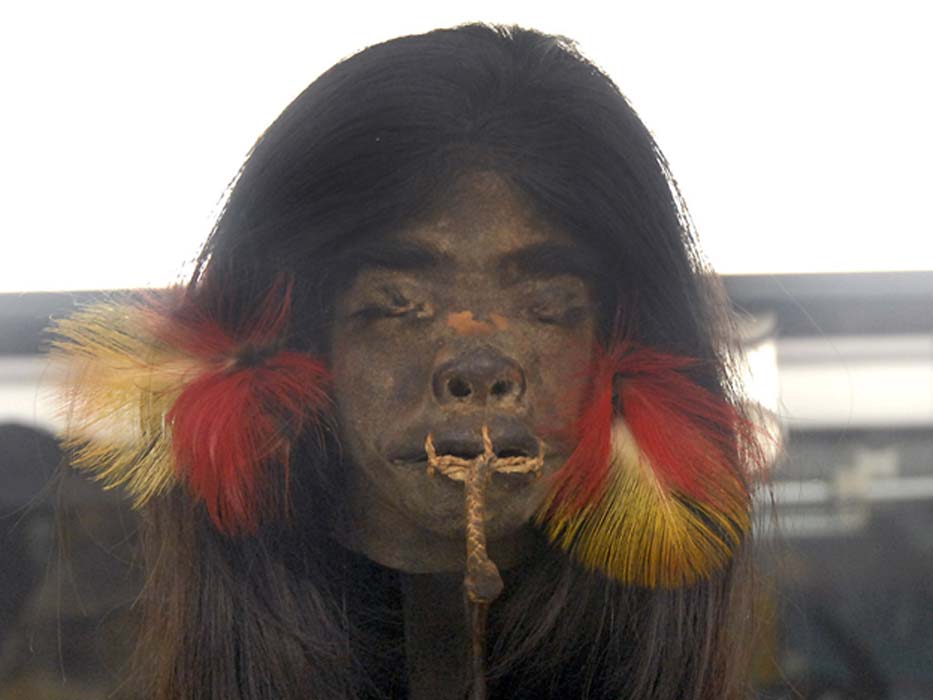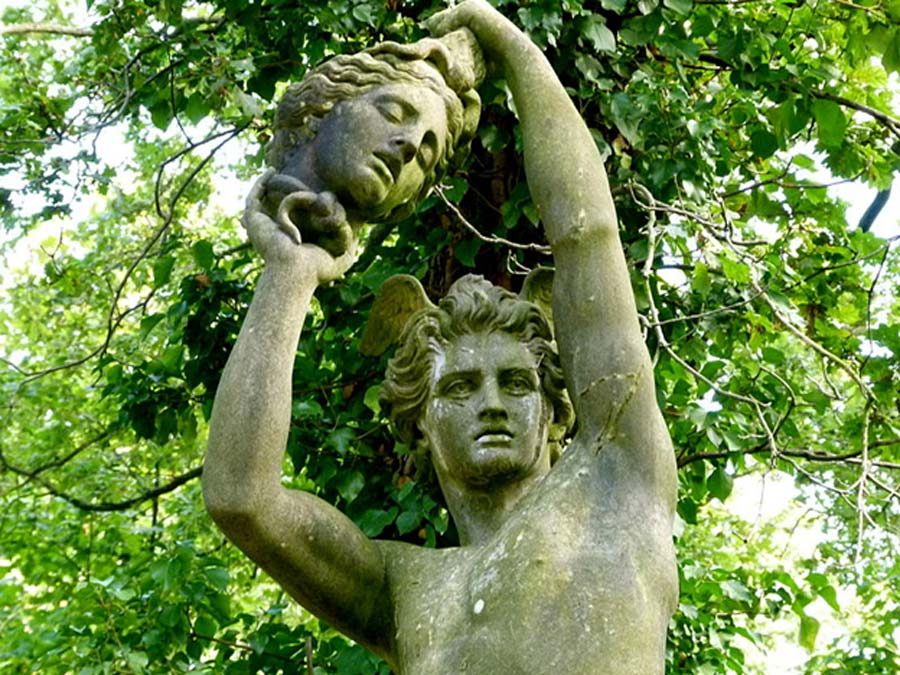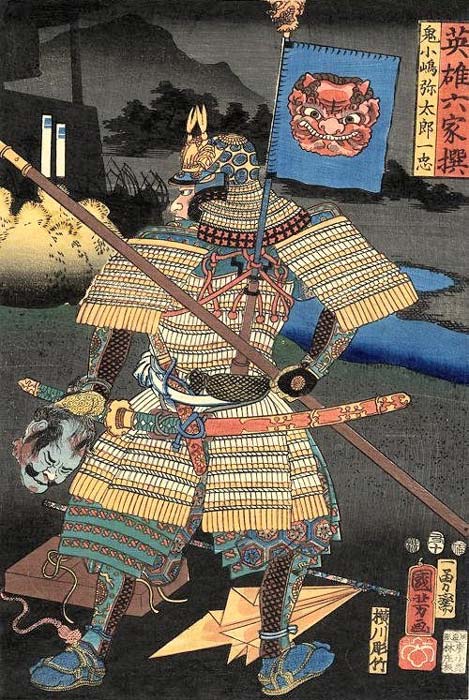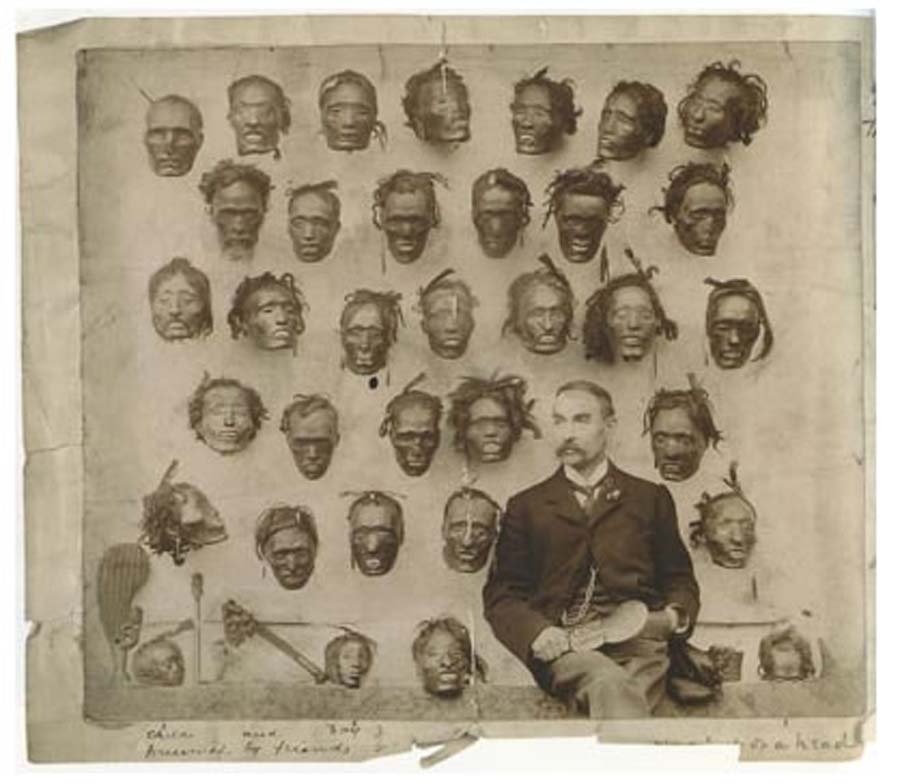
Head on a Platter: The Ancient Practice of Headhunting
In 1874, during a formal meeting known as the Tumbang Anoi Agreement, held in Damang Batu, Central Kalimantan, Indonesia, all the Dayak tribes gathered for a peace resolution. The meeting had lasted for several months and finally the outcome was agreed upon: the Dayak people throughout the island of Kalimantan were to end their ancient tradition of headhunting. This meeting was significant as the practice of headhunting and the use of human body parts as trophies had been a worldwide phenomenon in both prehistoric and historic times. These ‘trophies’ could be in the form of heads, teeth, scalps, hands, fingers, ears and skin among many other body parts. Of these human body parts, it is the head that has been considered as the most valuable trophy, since the head is popularly believed to be associated with the spirit of an individual.

Perseus holding the head of Medusa, sculpture in Jardin d'Agronomie Tropicale. (CC0)
Early references to headhunting for the purpose of using it as a trophy can be found in mythology - such as the story of Perseus and Medusa - and the Bible, in both the Old and New Testament. In Europe, the practice of displaying heads was widespread especially between the mid-17th and the 18th centuries, continuing sporadically until the early 20th century. This practice was also observed in Africa and Asia. In China, during the Spring and Autumn period (circa 771 - 476 BC) and Warring States period (475 – 221 BC), it was customary for the Qin soldiers to collect their enemies' heads as a body count, as most of them earned promotions and rewards from their superiors according to the number of heads they had collected.
In Japan, true to his mercenary origins, the samurai warrior would ceremoniously present trophy heads to a general when the battle ended. This general would variously reward him with promotions in rank, gold or silver, or land from the defeated clan and displayed the heads of defeated rivals in public squares.

Rear view of Onikojima Yatarô Kazutada in armor with a sashimono, a woodblock print by Utagawa Kuniyoshi from the series, Six Select Heroes. Samurai warrior holding a severed head. (Public Domain)
Relics of Headhunting in Asia and Oceania
In South-east Asia, headhunting was also a practice relating to war or feuding. Megalithic artefacts were found in Gomo, Sumatra, which consisted of batu pancung (beheading stone) - a stone on which to tie any captive or convicted criminals for public beheading. This practice was also once prevalent among tribal warriors in Nagaland in north-east India, bordering Myanmar, and among the Naga tribes in Myanmar where they used to harvest the heads of their enemies. In 1901, 10,000 skulls of the victims of this practice were found in a community longhouse on Goaribari Island, southern Papua New Guinea. The Korowai, a Papuan tribe in the south-east of Irian Jaya, traditionally live in tree houses as a defensive precaution against the Citak, a tribe of neighboring headhunters.

H.G. Robley with his collection of mokomokai (Public Domain)




